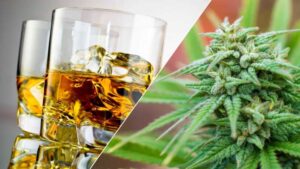
Revenues from the sale of alcoholic beverages in Ukraine in February 2025 amounted to UAH 11 billion, which is UAH 1 billion (8%) less than in January 2025 and UAH 5.5 billion (33%) less than in December 2024,
Danylo Hetmantsev, Chairman of the Parliamentary Committee on Finance, Taxation and Customs Policy, said on his Telegram channel.
He noted that the number of licenses issued in the first two months of this year increased by 18,435 units compared to December 2024.
At the same time, the average amount of revenue per license in February 2025 is UAH 106.8 thousand, which is UAH 8 thousand (7%) less than in January 2025 and UAH 88.3 thousand (45%) less than in December 2024.
“As you can see, the trade in alcoholic beverages shows a similar trend to the trade in another excisable good – tobacco products. We are tracking the reasons for such dynamics,” the head of the parliamentary committee summarized.
As reported, Hetmantsev drew the attention of law enforcement agencies to the reduction in February 2025 in revenue from the sale of tobacco products to UAH 9.6 billion, which is 8% (UAH 0.8 billion) less than the previous month. At the same time, the number of valid licenses for the retail sale of tobacco products increased by 12488 units in the first two months of the year and reached 75613.

The unshadowing of the alcoholic beverage market in 2024 brought an additional UAH 1.9 billion to the state budget of Ukraine compared to 2023, Danylo Hetmantsev, Chairman of the Verkhovna Rada Committee on Finance, Taxation and Customs Policy, said in a telegram channel.
He noted that the payment of excise tax on alcoholic beverages produced in the country increased by UAH 1.7 billion, or 24.4%, compared to 2021. Positive dynamics can also be seen in the growth of VAT tax efficiency: it is 6.88%, or 33.3% more than in pre-war 2021, when it was recorded at 5.16%.
At the same time, revenue from alcoholic beverages increased by 25% in November 2024 compared to January.
Hetmantsev noted that the President of Ukraine signed a bill on taxation of the alcohol market based on the capacity of the plants and expressed confidence that this would not allow the black market to be restored.
The head of the parliamentary committee called the increase in the capacity utilization of distilleries to 87% an important indicator of the de-shadowing of the alcoholic beverage market in 2024. This helped to produce 23.7 million dal of alcohol in 10 months of last year, which is 189% more than in peaceful 2021, when the distillery’s capacity utilization was 60%.
“This meant that all the residual capacity was directed to the bottle without excise duty,” Hetmantsev added.
According to him, the law No. 4014 adopted by the parliament is aimed at ensuring the full payment of excise tax by producers of ethyl alcohol and bioethanol.
“The law makes it economically unprofitable to conditionally “not use” the capacities. It is extremely important that the controllers do not turn a blind eye in the process of fulfilling the requirements of the law,” summarized the Chairman of the Parliamentary Financial Committee.

On January 1, 2025, the provisions of the law on state regulation of production and circulation of ethyl alcohol, alcohol distillates, bioethanol, alcoholic beverages, tobacco products, tobacco raw materials, liquids used in electronic cigarettes and fuel came into force in Ukraine, the State Customs Service (SCS) reported.
According to the amendments provided for by Law No. 3817-IX, the placement of these goods in certain customs regimes is allowed only if they have the relevant valid licenses or in storage facilities included in the register of the State Tax Service.
The State Customs Service reminded companies transporting ethyl alcohol, alcohol distillates, bioethanol, alcoholic beverages, tobacco products, tobacco raw materials, liquids used in electronic cigarettes, and fuel across the customs border of Ukraine to take this information into account during the next customs clearance of exported goods.

The draft law No. 10346 on state regulation of production and circulation of ethyl alcohol, alcohol distillates, bioethanol, alcoholic beverages, tobacco products, tobacco raw materials, liquids used in electronic cigarettes, and fuel adopted by the Parliament provides for a number of exemptions for craft products.
This was announced by Ivan Marchuk, Chairman of the Subcommittee on State-Business Interaction and Investment of the Verkhovna Rada Committee on Economic Development.
“For the first time in more than 30 years of our independence, we have jointly structured legislation designed to lay down the most comfortable and unified principles for the development of the Big (small) Craft Four – small winemakers, small distillers, small honey producers and small brewers,” he wrote on Facebook.
Marchuk called the main elements of the “craft revolution” the permission for small brewers to produce 1 million liters and at the same time have a declaration instead of the burdensome and costly certification of production.
For all craft producers, the rules for obtaining a license in electronic form within 10 days and reporting on production and turnover once a year were unified and re-enforced;
At the same time, fines for failure to submit or late submission of reports with inaccurate information on production and turnover volumes, etc. were reduced by 10 times.
“Of course, there is no limit to improvement, we will continue to improve the legislation for SMEs. We have already agreed to work on the possibility for small winemakers to produce semi-sparkling wines “petnats” under a “small license” and other useful benefits, which will be discussed later,” the MP summarized.

In 2023, the number of Americans who use marijuana on a daily basis exceeded the number of those who drink alcohol daily, the Associated Press reports, citing a study by Carnegie Mellon University.
About 17.7 million people consumed marijuana daily or almost daily the year before last, compared to 14.7 million who drink alcohol with the same frequency, the study said. For comparison, in 1992, less than 1 million Americans used marijuana almost daily.
“A good 40% of marijuana users use it daily or almost daily. This pattern of consumption is more closely associated with tobacco than alcohol,” said Jonathan Caulkins, a researcher at the university.
He emphasized that the data is based on surveys, and respondents may have been more willing to admit to daily marijuana use due to the fact that it is becoming more socially acceptable in the United States.
While marijuana is legal in most states for medical or recreational use, it is still prohibited at the federal level.
Studies show that frequent use increases the likelihood of becoming addicted to marijuana or developing cannabinoid psychosis, said David Gorelick, a professor of psychiatry at the University of Maryland School of Medicine.

In 2023, the largest alcohol producers increased their income tax payments by 1.7 times compared to 2022, and their income tax efficiency increased from 1.4% in 2022 to 2.0% in 2023, said Danylo Hetmantsev, chairman of the Parliamentary Committee on Finance, Taxation and Customs Policy.
“Measures to de-shadow the alcoholic beverage market, despite the fierce resistance of black market areas (the so-called ‘business defenders’ and ‘sofa experts’), are yielding positive results in the form of budget revenues,” he wrote on Telegram.
The committee chairman named National Vodka Company LLC (Bayadera Group), LVN Limited LLC (TM Nemiroff), Lviv Distillery, and Shustov-Spirt ALC as the leaders in terms of tax efficiency.
According to him, Global Spirit Group has significantly improved its VAT tax efficiency from 3.5% in 2022 to 6.1% in 2023 and 9.4% in 2 months of 2024.
According to Mr. Hetmantsev, the largest alcohol producers have improved their performance not only in terms of income tax, but also in terms of VAT. For two months of this year, VAT payable has already been declared by 28.1% more than in the same period last year.
At the same time, the VAT tax efficiency increased to 6.2% in two months of 2024 from 4.9% in two months of 2023. At the same time, this figure increased by 5.2% compared to 2023.